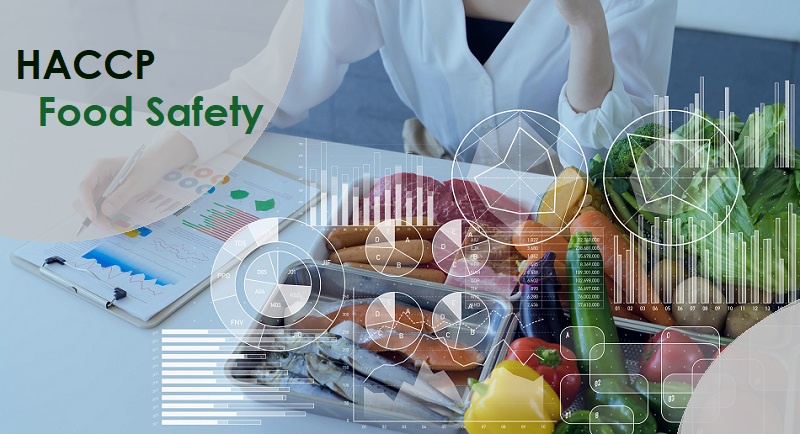Hazard Analysis and Critical Control Point is referred to as HACCP. A food institution or producer can create a food safety strategy using this seven-step procedure. HACCP standard is a risk management and assessment plan for food safety that was developed in the late 1950s by NASA in collaboration with a few food safety experts from The Pillsbury Company and the Natick Research Laboratories. In the beginning, the group created a mechanism to guarantee food safety for the human space program. Several publications battled to establish HACCP as the nation's most widely used food safety system in the late 1980s. Every step of the food supply chain, including the distribution and the three Ps (production, preparation, and packaging), should use HACCP.
HACCP is a unique approach created to help businesses to reduce any food safety issues. Preventing potential biological, chemical, and physical hazards during the food processing process is its main objective. HACCP tries to guarantee the safety of the completed manufactured product that is in some way offered to customers by trying to spot any possible risks. It makes it possible to accurately construct the highest quality control measures. When it becomes required, such control measures would be implemented to lessen the likelihood that any hazards are occurring.
Critical control points (CCPs) are emphasised in the process where hazards can be managed to reduce the risk of foodborne illness. These criteria are used to identify and manage the most likely causes of foodborne disease. CCP focuses on prevention rather than detection. They are not a monitoring system; rather, they are a way of thinking about HACCP as something that you perform throughout your entire operation rather than simply at one moment in time. That is why CCPs are so useful—they assist you in looking at your entire system, seeing where problems may occur, and then taking steps to rectify them before they become a problem for consumers.
A basic HACCP plan's principal goals are to prevent and eliminate biological hazards in food production and, eventually, to ensure that no consumer obtains unsafe food. The following are some instances of crucial control points:
- Food Purchasing
- Product delivery and receipt
- Food product storage
- Food production
- Display of food
- Cleaning and maintenance service
- Staff HACCP Food Safety Certified Auditor Training and hygiene standards
- Calibration checks and monitoring system
To address typical food safety hazards, food organizations use three types of hazard testing at these points:
- Microbiological Testing
Cooking food to a certain temperature to destroy pathogens is the most prevalent way of removing biological risks from raw materials for food safety concerns. To destroy the hazardous germs Salmonella, for example, poultry must achieve an internal temperature of at least 160°F. Frozen foods, on the other hand, can help to keep dangerous bacteria at bay. Another strategy is product formulation control, which includes using natural or artificial preservatives.
- Physical Testing
Control procedures are in place in the food industry to detect foreign matter and physical pollutants at control points. Common food safety hazards such as hair, metal fragments, wood, insects, dirt, trash, etc. are found by physical testing. Furthermore, an infestation of pests is crucial because a physical hazard, such as dead insects or rat waste, can eventually turn into a biological hazard to food safety. Two other CCPs that, if not properly managed, may increase the risk to food safety are product storage and transportation.
- Chemical Testing
Chemical risks are another common problem in food handling. Again, frozen and cooked meals give adequate control against chemical germs. Furthermore, food additives can increase shelf life. Finally, certain packaging options can provide several hazards during the packing control point, which happens after food preparation. When canning acidic foods (such as tomatoes), for example, packing with a low pH level might result in corrosion.


No comments yet